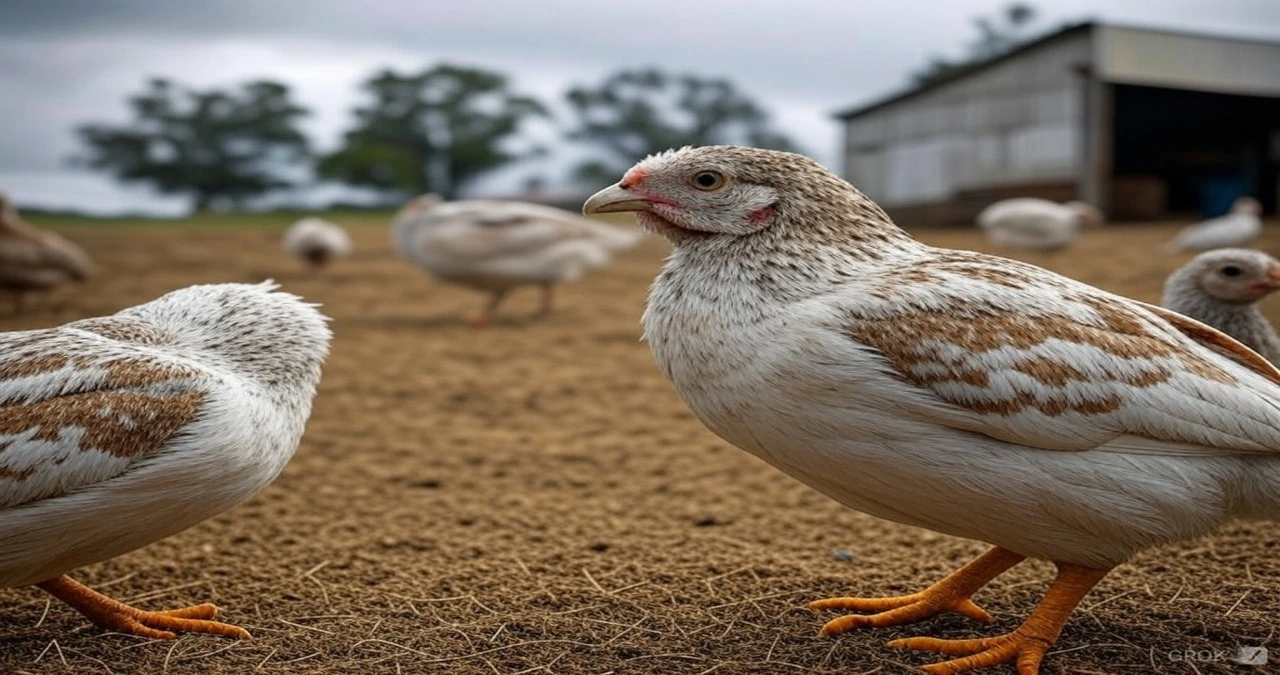representative image credit-X
California Bird Flu-In an alarming turn of events, California Governor Gavin Newsom has declared a state of emergency in response to a surge in Avian Influenza A (H5N1), commonly referred to as bird flu. This virus has infected 34 people in the state, raising concerns about public health and the agricultural sector. The declaration underscores the urgency of containment and enhanced monitoring to combat the outbreak effectively.
Outbreak Overview: Rising Concerns in California
Bird Flu California-The outbreak has been linked primarily to infected dairy cows on farms in Southern California. According to state officials, nearly all human cases in California resulted from direct contact with infected livestock, particularly cows. No instances of person-to-person transmission have been reported so far.
Nationwide, the virus has spread across 16 states, infecting 61 individuals since April 2024. The H5N1 strain first appeared in wild birds in South Carolina in 2022 and was later detected in California’s wild bird population.
Government Action: Emergency Measures in Place
Governor Newsom’s declaration of a state of emergency aims to strengthen the state’s response to the outbreak. Steps include:
Enhanced Testing: California boasts the most extensive testing and monitoring system in the nation for detecting H5N1 cases.
Protective Measures for Workers: Dairy farm workers and handlers of raw milk are being provided with protective gear to minimize exposure risks.
Awareness Campaigns: Authorities are working to educate the public and agricultural workers on safety protocols and symptoms of infection.
The California Department of Public Health confirmed on December 13 that 33 dairy cows had tested positive for the virus, signaling the critical need for swift action.
Read Also-Tragedy Strikes Towson: 1 Dead, 9 Injured in Baltimore Shooting and Fiery Crash
National Impact: A Growing Threat
Since its initial detection in Texas and Kansas in early 2024, the H5N1 virus has posed a significant threat to the U.S. agricultural industry and public health. Louisiana recently reported a severe human case, amplifying concerns.
The Centers for Disease Control and Prevention (CDC) continues to monitor the situation, offering guidance to states affected by the outbreak.
What’s Next? Containing the Spread
Experts stress that swift containment measures and robust monitoring are crucial to halting the virus’s spread. While no person-to-person transmission has been recorded, the situation remains fluid. The state government has urged dairy farms to adhere strictly to safety protocols.
California residents are encouraged to remain vigilant and report any symptoms associated with H5N1 exposure, such as fever, cough, or respiratory distress, especially if they have been in contact with livestock.
FAQs
1. What is the current situation with bird flu in California?
California has reported 34 human cases of H5N1, primarily linked to infected dairy cows. The state has declared a state of emergency to address the outbreak.
2. Is there a risk of person-to-person transmission?
As of now, no person-to-person transmission has been recorded in California. Most infections result from direct contact with infected cows.
3. What measures is the government taking?
California has implemented enhanced testing, provided protective gear to dairy farm workers, and launched public awareness campaigns to mitigate risks.
4. How widespread is the bird flu outbreak in the U.S.?
H5N1 has been detected in 16 states, with 61 human cases reported nationwide since April 2024.
5. How can individuals protect themselves?
Avoid direct contact with infected animals, wear protective gear when handling livestock or raw milk, and report any flu-like symptoms to healthcare providers immediately.
The declaration of a state of emergency highlights the severity of the situation. California’s swift response reflects the critical need to protect public health and the state’s vital dairy industry from the growing threat of bird flu.

1 thought on “California Declares Emergency Over Bird Flu Outbreak: What You Need to Know”